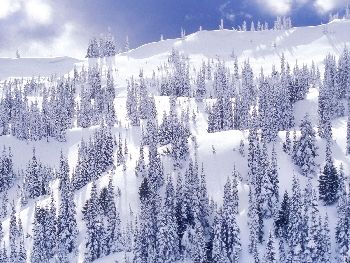
Publisher:
Bonnie King
CONTACT:
Newsroom@Salem-news.com
Advertising:
Adsales@Salem-news.com

~Truth~
~Justice~
~Peace~
TJP
Nov-19-2009 20:26

 TweetFollow @OregonNews
TweetFollow @OregonNews
Harsh Weather Expected in NW Mountains
Salem-News.comSince 1990, King County has experienced 11 federally declared flood disasters—an average of one every two years.
 Hurricane Ridge, Olympic National Park, Washington Courtesy: bergoiata.org |
(OLYMPIA, Wash.) - The Olympics, North Cascades and Oregon coast are being slammed this week by a classic example of a “pineapple express” storm– a narrow plume of warm, wet air drawn northward from the tropics. Rainfall in the Olympics, Willapa Hills, and North Cascades is expected to reach 5-10 inches: (cliffmass.blogspot.com/).
“Olympic rivers will flood and there is a strong possibility of flood downstream of the N. Cascades (e.g., Nooksack).” (cliffmass.blogspot.com/)
So far, Howard Hansen Dam and the Green River Valley are not expected to experience significant precipitation (1-2 inches). However, while much of Puget Sound may have dodged disaster this time, we will not always be so fortunate. When these storms strike in winter, they produce prodigious amounts of rain over a large area. The rainfall alone, or even worse, rain falling on snow, may lead to significant flooding.
Global warming is exacerbating extremely heavy rainfall events, and recent climate change modeling suggests that these pineapple express storms are no exception. “Heavier rainfall events combined with significant snowmelt in midwinter is just what the Pacific Northwest should expect from global warming,” said Dr. Amanda Staudt, climate scientist, National Wildlife Federation. “These trends indicate that preparing for significant flooding events is all the more prudent.”
Since 1990, King County has experienced 11 federally declared flood disasters—an average of one every two years. In January 2009, 23 Puget Sound rivers flooded—four of them at record levels. Recent data suggests that as a result of climate change, the largest storms (i.e., those that are most likely to cause flooding) will trend toward producing increasingly larger quantities of precipitation. Thus, flooding is likely to become worse in the future unless floodplain protection and stormwater management improves.
“With the prospect of more intense storms, we should be taking a different flood management approach,” said Dan Siemann, Senior Environmental Policy Specialist with National Wildlife Federation’s Pacific Region.
“Rather than relying on levees and other flood control structures, flood management should focus on preventing unwise development in flood prone areas, providing incentives for people and businesses to move out of harm’s way, and restoring floodplains so that flood water has a place to flow away from people.”
National Wildlife Federation is working to reform the National Flood Insurance Program to improve flood protection standards that more effectively protect people and the fish and wildlife that depend on floodplains.
========================================
Source: National Wildlife Federation, America's conservation organization inspiring Americans to protect wildlife for our children’s future.
Articles for November 18, 2009 | Articles for November 19, 2009 | Articles for November 20, 2009


Salem-News.com:


googlec507860f6901db00.html
Terms of Service | Privacy Policy
All comments and messages are approved by people and self promotional links or unacceptable comments are denied.
[Return to Top]
©2025 Salem-News.com. All opinions expressed in this article are those of the author and do not necessarily reflect those of Salem-News.com.